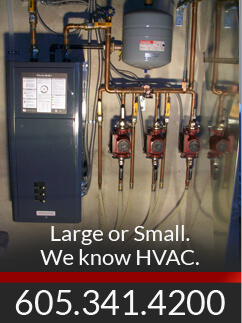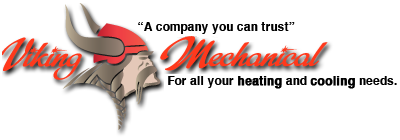FAQs
Answer: It is the amount of Heat required to change the temperature of one pound of water by one degree fahrenheit.
Answer: One ton equals 12000 BTUs per hour.
Answer: This is a cooling efficiency with respect to power consumption.
Answer: The air cleaner should be checked and cleaned at least once every month or more often as may be necessary.
Answer: Depending upon A/C capacity. The Electrical Power Consumption will vary.
Answer: It will depend on the type of system. A normal A/C Split System will require a 1-hour maintenance visit per year.
Answer: Yes. Viking Mechanical offers a complete line of variable speed A/C, Heat Pump and Air Handler units.
Answer: The newer variable speed heat pump systems not only work like an air conditioner but they also extract heat from the air and can be used to heat your home and only use your back up furnace if the outside air temperature is below 15 degrees or so. This means you are using much less electricity to heat your home. In most cases you will save over 80% in heating costs compared to a standard gas furnace system, depending on the cost of your fuel and electricity.
Answer: Depending upon the season the system you purchase and our schedule we can usually install your system within a couple of weeks or less.
Answer: The charge is $90 per hour (as of 2023 but subject to change) with a 1 hour minimum for a service technician to inspect your heating/cooling system. There are additional charges for replacement parts if this is required to get the equipment back in operation.
Answer: Not at this time.
Answer: First, check to make sure the breaker for the air conditioner in your power panel is in the on position. Second if there is a disconnect box to the outside condenser unit turn it on. If after turning these on the A/C still will not run, call us.
Answer: It could be a couple of things, First, check the air filter in your system. Make sure it is not plugged or very dirty. A plugged or extremely dirty air filter can significantly restrict the air flow through your air handler and reduce the efficiency of the air conditioning unit. Second, it is possible that there is a leak in the outside compressor Freon line or thta the Freon charge is low. In either case the A/C unit will not cool the coil and not remove the moisture from the air. Get the unit serviced as soon as possiable.
Answer: First, check to make sure your furnace filter is not plugged or very dirty. A plugged filter could severely restrict air flow and reduce capacity of the air handler. If this is not the problem then you may have lost some Freon in the compressor or there is a leak in the Freon line. Get the unit serviced. call us.
Answer: The structural design of the home, the layout of the duct work and returns and supplies and the tightness of the home are all variables that may be part of this problem. Usually the best solution is to have a contractor check the air conditioning system or consider using a whole-house dehumidifier unit. The newer, tighter homes do not breathe as well as the older homes and ten to hold in moisture longer. Also, make sure the air conditioning system has been serviced. Call us.
Answer: Unlike the older dial style thermostats, the newer digital thermostats allow you to control temperature settings for any day of the week and for any time of the day. Read through the manual that came with the thermostat. If you don't have the manual you may want to go on-line and see if the company that make the thermostat has instructions you can download. If it is one that we installed call us or go to our main menu and you can find a like to that company (usually Trane Thermostats).
Answer: No.
Answer: It is essential that you replace the humidifier pad at least once a year even if you only run the humidifier part of the year. If you have very hard water you may need to replace your water panel more often.
Answer: It is not necessary to have the humidifier on in the summer months. You should turn it off or re-locate the damper to the summer position. However, remember to turn it back on before the heating season begins.
Answer: While a heat pump is perfectly capable of effectively heating your home, the temperature of the air coming out the the registers confuses some people. The air is heating to about 90 to 95 degrees, depending on the outdoor temperature. This temperature is approximately 20 to 25 degrees warmer than the indoor air temperature and will warm your house. It is, however, below body temperature (98.6 degrees) and can feel cool when someone puts their hand in the airflow. Also, when the outdoor heat pump is in a defrost mode the air will be lower than the room temperature for a few moments.
Answer: Unlike older-model gas furnaces taht used a standing pilot light to ignite the burners on the furnace, many of today's models use an electronic ignition system. This includes a Hot Surface Igniter, sometimes referred to as a glow plug or glow stick. When there is a call for heat, the igniter receives electrical current in order to heat its surface and ignite the burners in the furnace.
Answer: A single stage furnace will deliver the same amount of heat and airflow no matter what the temperature is outside. A 2-stage furnace with a 2-stage thermostat will begin in first stage (low burner, low airflow) and only go to second stage if the indoor temperature drops during first stage. This make the furnace run longer, providing greater air circulation, temperature distribution, and air filtration. This also provides a more consistent indoor environment. The second stage will only come on when the need is there and then it will be able to run longer and maintain the comfort level. The more your system starts and stops, the less control you will have of your home's environment - and the less efficiently it works, partly due to duct heat loss. The advantage of a 2-stage, variable-speed furnace is it has Comfort Enhanced mode. This allows the coil to cool quickly and the blower to slowly ramp up and ramp down or operate at 50 percent of the cooling air speed in the FAN ON position. This provides greater humidity control, quieter operation, and maximum air circulation, temperature distribution, and air filtration.
Answer: The major components enclosed in an air handler's cabinetry are the blower and motor, controls, heater compartment, and an evaporator coil. This is why it is also sometimes referred to as a fan coil. A standard air handler, like the single stage furnace, delivers the same amount of airflow no matter what the temperature inside. A variable-speed air handler has a Comfort Enhanced mode, like our variable-speed gas furnace, allowing the coil to cool down quickly and the blower to slowly ramp up and ramp down or to operate at 50 percent of the cooling air speed in the FAN ON position. This provides greater humidity control, quieter operation, maximum air circulation, temperature distribution, and air filtration for greater control of your home's indoor environment.
Answer: 16 Seer outdoor product lines have higher air conditioning efficiencies (SEER) ranges that the 13 Seer lines. Some include enhanced features such as hail guards that provide maximum protection for the outdoor condenser coil, a compressor sound enclosure for quiet performance, a two-speed condenser fan that improves both efficiency and sound levels, and more involved warranty offerings.
Answer: We recommend a programmable thermostat for most heating and cooling systems, except for some heat pump systems. The heat pump operates more cost effectively if you always maintain the same heating set point.
Answer: The heat pump is an air conditioner that reverses the process of removing heat fromt he inside of the house in summer to absorbing the heat from outside air and moving it inside in winter. It is effective by itself down to temperatures around 25 to 30 degrees fahrenheit. At that point, either a gas furnace or an air handler with supplemental electric heat will kick in and help heat your home. The Auxiliary Heat light on your thermostat will light. The heat pump will continue to operate along with the electric auxiliary heat. It will shut off when a gas furnace is energized. Emergency heat is a manual override option in the event your heat pump needs service.
Answer: Under normal operating conditions, the auxiliary heat is brought on automatically by the thermostat when the indoor temperature drops during heat pump operation. There are also times during cold, wet weather when the outdoor coil may ice up and your heat pump will go into a defrost cycle. This is nothing more than reversing the process back to cooling mode. Cooling mode makes the outdoor coil hot and melts any ice. The defrost system should only last a few minutes and then return to heating mode. During the defrost cycle, your comfort system is in cooling mode and the supply air is cool. To offset this cool air, the auxiliary heat will be energized during defrost. A mist or fog may be visible from the outdoor unit during defrost.
Answer: The heat pump is effective in many geographies. In all electric applications, the heat pump will consume less energy than an electric furnace or air handler using resistance heat. Why? Because it can deliver the same amount of BTUs as electric heaters using less electrical input that the electric heat. In moderate climates the savings that natural gas yields may not be as advantageous as in colder climates, since there is less frequent use of the furnace in milder climates. Of course, the heat pump can be matched with a gas furnace where preferred. The heat pump can operate in the milder temperatures when the gas furnace may tend to short-cycle.


